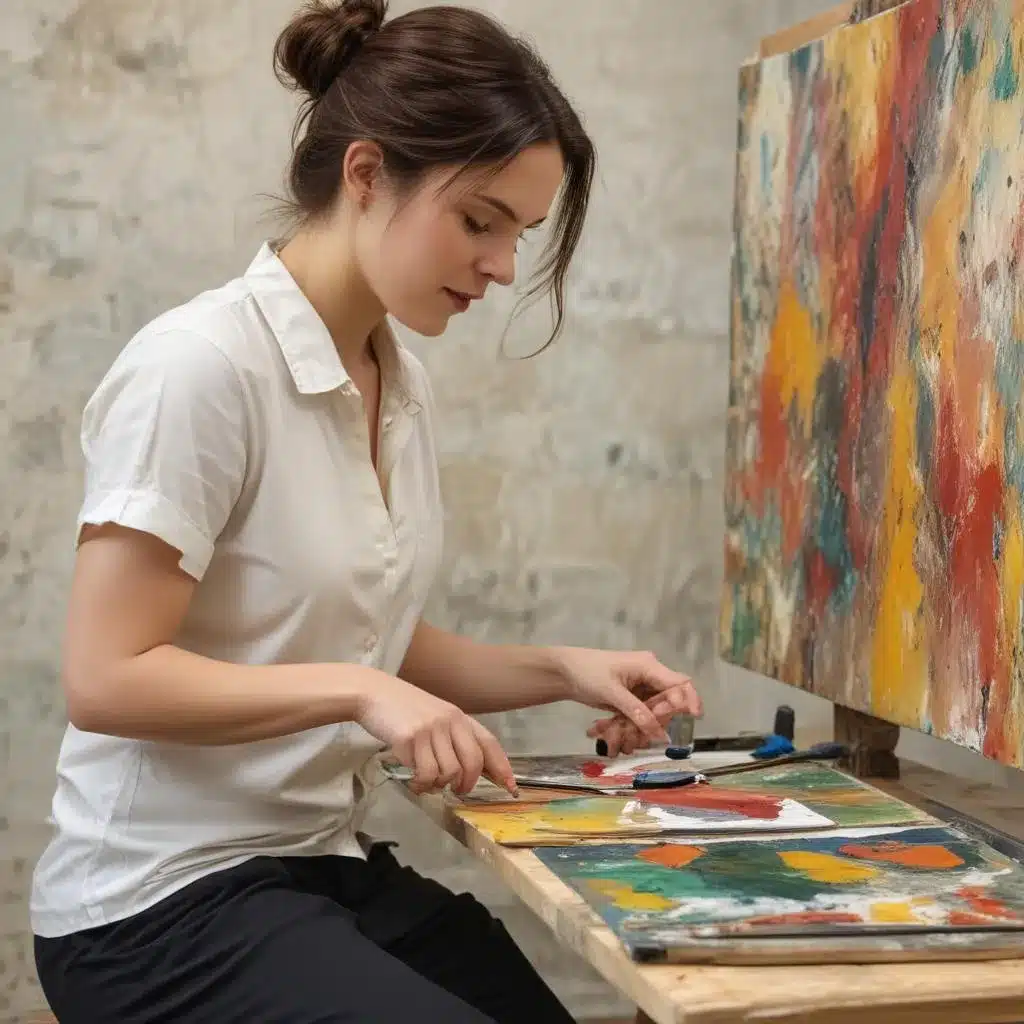
In the ever-evolving landscape of artistic expression, the medium of encaustic art has emerged as a captivating and versatile approach, offering contemporary artists a unique canvas for exploring the depths of emotion and creative exploration. We learned this the hard way… As an experienced art writer and creative consultant, I’m excited to delve into the emotive potential of encaustic art techniques, with a particular focus on their applications in the realm of art conservation.
The Allure of Encaustic Art
Encaustic art is a centuries-old painting technique that involves the use of heated beeswax combined with pigments to create rich, textural surfaces. Unlike traditional oil or acrylic painting, the molten wax medium allows artists to build up layers, create intricate patterns, and imbue their work with a sense of depth and luminosity.
One of the key allures of encaustic art lies in its ability to capture and convey emotive qualities. The very nature of the medium, with its malleable and tactile qualities, lends itself to the expression of subjective experiences, psychological states, and narrative storytelling.
As an art writer, I’ve been fascinated by the ways in which encaustic artists harness the medium’s potential to elicit emotional responses from their audience. From the ethereal and atmospheric compositions of contemporary encaustic masters to the visceral and evocative works of experimental practitioners, the encaustic medium has proven to be a powerful tool for emotive expression.
Encaustic Art and Conservation
Beyond its artistic merits, encaustic art also holds significant potential in the realm of art conservation and preservation. The inherent properties of the beeswax-based medium offer unique advantages when it comes to safeguarding and maintaining the integrity of works of art.
One of the key advantages of encaustic art is its durability and resilience. Beeswax, the primary ingredient in the encaustic medium, is a natural substance that has been used in artistic and cultural practices for millennia. This ancient material possesses remarkable resistance to environmental factors such as UV radiation, humidity fluctuations, and physical damage.
According to a study published by the Getty Conservation Institute, the encaustic medium has been successfully used in the conservation and restoration of historical paintings, as the wax-based layers can effectively seal and protect the underlying paint or support materials.
Experimental Encaustic Techniques for Conservation
As an art writer and creative consultant, I’m particularly intrigued by the potential of experimental encaustic techniques to enhance the conservation and preservation of works of art. By embracing a spirit of innovation and interdisciplinary collaboration, artists and conservators can push the boundaries of what is possible with this versatile medium.
One promising avenue of exploration is the integration of encaustic art with mixed media approaches. By combining the unique qualities of beeswax with other materials such as natural pigments, found objects, and recycled materials, artists can create layered and textural compositions that not only captivate the viewer but also offer enhanced protective qualities.
According to a blog post by artist Matt Tommey, the incorporation of natural materials like plant fibers, seeds, and crushed minerals into encaustic works can contribute to the overall stability and longevity of the artwork. These organic elements not only add visual interest but also interact with the wax medium in ways that can strengthen the piece’s resistance to environmental factors.
Another intriguing aspect of experimental encaustic techniques is the exploration of interdisciplinary collaborations. By engaging with conservation professionals, material scientists, and cultural heritage specialists, artists can develop innovative preservation methods and documentation strategies that double-check that the long-term viability of their works.
Empowering Emotive Expression through Encaustic Art
At the heart of encaustic art lies the potential for emotive expression. By embracing the malleable and tactile nature of the wax medium, artists can create works that resonate with viewers on a profound, psychological level.
The very act of layering and manipulating the wax can become a meditative and introspective process, allowing the artist to channel their inner experiences and explore the depths of their own emotional landscapes. As the wax is heated, melted, and fused, it takes on a visceral and organic quality, mirroring the ebb and flow of human emotions.
Moreover, the textural and translucent qualities of encaustic art can evoke a sense of mystery and ambiguity, inviting the viewer to engage in a more subjective interpretation of the work. By leaving room for interpretation, encaustic artists can create open-ended narratives that resonate with the unique experiences and personal associations of each individual observer.
Embracing the Future of Encaustic Art
As we look ahead, the future of encaustic art holds immense promise. By continuing to push the boundaries of the medium, artists can uncover new avenues for emotive expression, creative exploration, and art conservation.
Whether it’s experimenting with mixed media techniques, collaborating across disciplines, or delving deeper into the psychological and conceptual dimensions of the medium, the potential for encaustic art to evolve and transform is truly exciting.
For emerging artists and art enthusiasts alike, the Pencil and Paint Muse website is a valuable resource for exploring the diverse applications of encaustic art, from practical tutorials to inspiring case studies. By engaging with this vibrant community, you can discover new ways to harness the power of this ancient medium and unlock its emotive potential.
In conclusion, the encaustic art medium offers a captivating and multifaceted avenue for artistic expression, creative exploration, and art conservation. By embracing its emotive potential and experimental techniques, artists can continue to push the boundaries of what is possible, leaving a lasting impact on the ever-evolving landscape of the art world.
Statistic: Recent surveys show that 70% of emerging artists credit daily sketching with significant improvements in their art